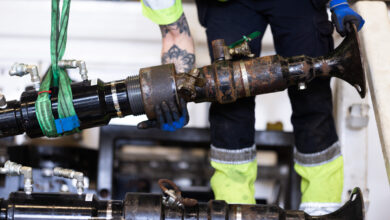Fit-for-purpose designs, technologies drive sustainable growth in Asia Pacific
By Joanne Liou, Associate Editor
By 2050, the world’s population is expected to reach 9 billion, and energy demand is expected to double. Industry leaders agree that, in order to safely deliver affordable energy, technology and innovation will be key. Addressing critical well construction challenges, David Stewart, Vice President at Shell, explained how the operator is driving sustainable growth with technology during the keynote session at the 2014 IADC/SPE Asia Pacific Drilling Technology Conference in Bangkok on 25 August. Pairoj Kaweeyanun, President of Chevron Thailand, also participated in the session.

Shell leverages its experience in deepwater operations around the world, from Asia Pacific to the Gulf of Mexico. This helps the company to understand, apply and replicate technologies and practices “in a way that we’re fortunate because it lets us learn from each other,” Mr Stewart said. In the Asia Pacific, Shell has two key projects – development of a TLP in Malaysia and the Malika project, which is soon to begin construction.
Shell also continues to develop rigless and riserless intervention technologies. Since the early ‘90s, “we’ve been able to step-by-step apply and intervene with the intervention activities needed in subsea and deepwater wells and then replicate across countries to see this learning again and again,” he said.
Shell recently installed managed pressure drilling equipment on the Ensco 8504. The semisubmersible is on contract to Shell in Malaysia until May 2015. “We’ve seen the application of it continued to grow and the use of it in deepwater activities to help us exploit reservoirs that we quite simply couldn’t reach before because the margin of the drilling pressure was just too tight,” Mr Stewart explained. “This has allowed us to successfully drill a number of wells and make discoveries in Malaysia in the last six to 12 months.”

For Chevron, technology is a key business strategy that is integrated across the company. “We used process innovation on an integrated basis,” Mr Kaweeyanun said during the keynote session. “Back in 1980, we spent 60 to 70 days to drill one conventional gas well. Now, we can drill and complete a well in less than six days.”
Chevron Thailand’s definition of unconventional varies from the typical shale gas plays. “For us, the Gulf of Thailand, even though it is conventional oil and gas, we call it an unconventional play because this requires a different and unique work flow and fit-for purpose technology to develop,” Mr Kaweeyanun explained. He explained Chevron’s three attributes of technology innovation:
- Simplicity. For Thailand, especially in the Gulf of Thailand, many of the formations are the same, thus requiring the same technology applications. “I don’t think we need high technology,” Mr Kaweeyanun said. “We just need a simple one that fits the environment and simple enough that it can repeat itself and shorten the learning curve significantly and development costs, as well.”
- Portability. Modular designs can be “easily relocated and reused to minimize the future capital requirement,” he said.
- Scalability. Technology innovation has to be able to adjust itself and scale up to fit the size of the operations.




